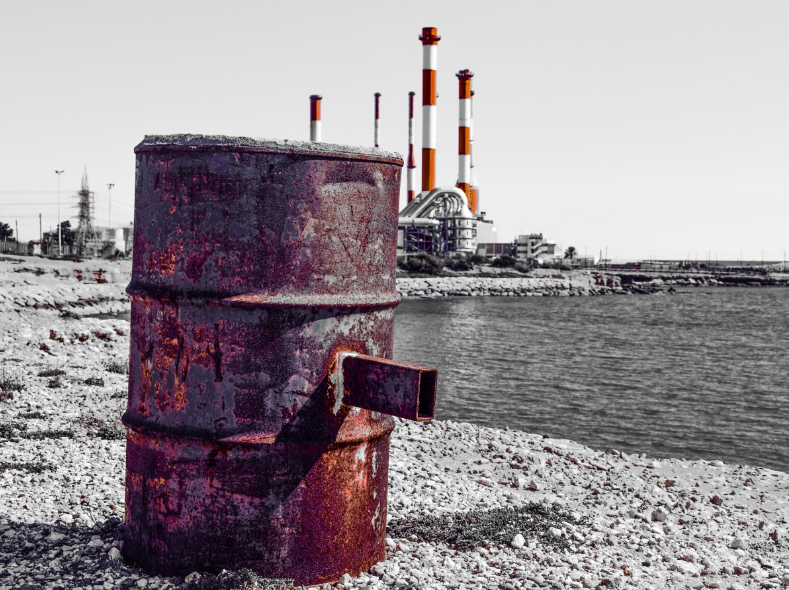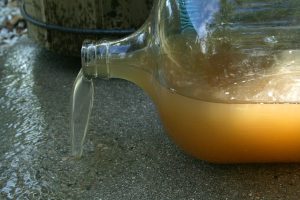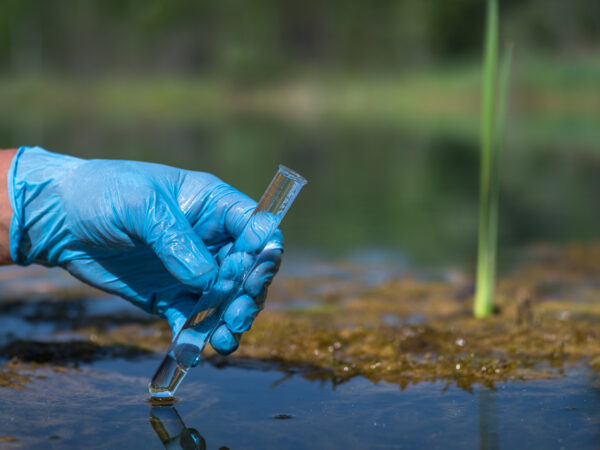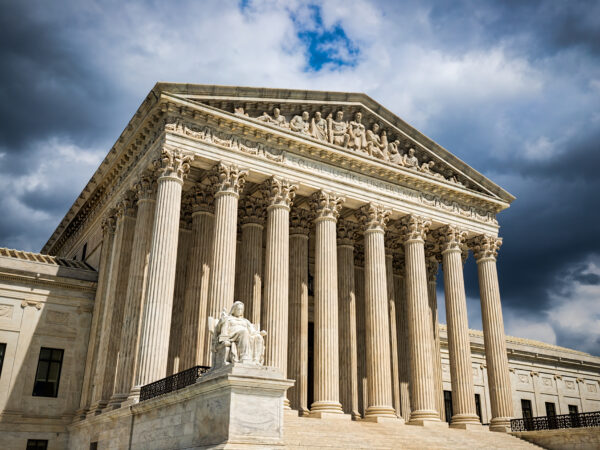
Author reflects on toxic sites ten years after seminal book
The 31 toxic legacy sites on a Great Lakes region map appear abstract.
They’re described in sanitary language like “Areas of Concern” and “management actions” by the U.S. Environmental Protection Agency.
The sites are marked by decades-long work to clean them up which includes progress, political wrangling and bureaucratic inertia.
The legacy sites are not abstract to Nancy Nichols.

Nancy Nichols, author of Lake Effect: Two Sisters and a Town’s Toxic Legacy, Photo courtesy of Nancy Nichols
Nichols was raised in the shadows of one of those sites, industrial Waukegan Harbor north of Chicago which was referred to as the “world’s worst PCB mess.”
It was there that she and her sister Sue innocently played on the beach with the toxic harbor as the backdrop. Nichols’ sister would ultimately contract cancer that would take her life and Nichols too developed the disease and survived.
Their experiences lead Nancy Nichols, a journalist, to look for a connection between Waukegan Harbor’s “PCB mess” and the cancer. The result was the seminal book, Lake Effect: Two Sisters and a Town’s Toxic Legacy.
In Lake Effect, Nichols chronicles her childhood in Waukegan, the cancer and its impact on her life. In her quest for answers, she asked “why.” Why did this happen? What was the connection between the toxic harbor and the cancer and was there proof of it?
Nichols wrote about her ordeal and the subsequent search for answers in unvarnished language. She didn’t paper over her personal and professional travails for ease of reading. Her research was far-reaching and meticulous, evidenced by the extensive bibliography and notes.

Lake Effect: Two Sisters and a Town’s Toxic Legacy, Photo Courtesy of Island Press
The book made a connection that’s still relevant today between the Rust Belt’s industrial waste legacy and the well-being of people who live near the toxic waste discarded to its waterways.
It’s the 10th anniversary of the release of Lake Effect, Great Lakes Now checked in with Nichols who now lives in Boston.
In a wide-ranging discussion, the author touched on the importance of listening to people’s stories, the need to ask why this is happening and why these sites still exist, decades after being declared Areas of Concern. She also touched on the U.S. EPA under President Trump.
Communication “paradox”
Nichols says communicating personal stories for citizens today is a “paradox” with the advent of social media.
“There is so much more communication, especially on social media, but I feel as though people are not being heard as much,” she says. Nichols cites the Flint water crisis as an example.

Dirty water spilling from a bottle, Photo by Ildar Sagdejev via wikimedia cc 4.0
In Flint, citizens were complaining about brackish water coming from their pipes well before the lead problem became known publicly.
“People were sounding the alarm and yet the alarm went unanswered for a very long time,” Nichols said.
Nichols also sees a willingness in society to “blame people for their health problems” before asking about the impact of environmental influences. Obesity, for example, “seems likely to have environmental factors at play—especially when you consider certain farming practices,” according to Nichols.
“Why ask why?”
In Lake Effect she devoted a chapter titled “Why Ask Why” to the propensity of society to “brand cancer patients as survivors.”
She acknowledged that the practice has brought a “welcome sense of hope and optimism.”
But the branding “has also helped blind us to the vast environmental changes that have wracked our world and our bodies,” she wrote. She said asking why was not uniformly accepted in 2008.
Today, Nichols says “people are much more willing to think carefully about consumer products” than they were when she was researching and writing Lake Effect. But she still expressed a concern for a lack of “asking what happened or what caused this.”
With social and environmental injustice in mind, she worries about “anyone of any skin color who cannot afford to move out of industrialized areas.” With Waukegan as a prime example, she said Hispanics who may not have proper paperwork are at a “whole level of disadvantage that is beyond comprehension.”
She had praise for the U.S. EPA for its dedication over decades in cleaning up Waukegan Harbor.
But she told Great Lakes Now she suspects Waukegan’s close proximity to Chicago’s affluent North Shore communities may have garnered it more attention and resources than another toxic site may have normally received.
Detroit River cleanup inertia
Unlike Waukegan, the Detroit River’s contaminated sites are far removed from affluent cities as the river exits downtown to the industrial south on its journey to Lake Erie.
As previously reported, the EPA’s current estimate is that “management action” on removing contaminated sediment from the Detroit River is expected to be complete by 2025, or later. That assumes continued funding that has to be renewed in the federal budget annually and the availability of matching state and local funding. It also involves identifying responsible parties and holding them accountable, a laborious process.
Congresswoman Debbie Dingell’s district includes a significant stretch of the Detroit River.
Great Lakes Now asked Dingell if it’s reasonable to expect Detroit and Downriver residents to continue to live, work and recreate near a river that was declared a toxic site in 1987. She said, “It is completely unacceptable that this cleanup is not complete even though the problem was identified over 30 years ago. Downriver residents have waited far too long for a complete cleanup of the Detroit River. While much progress has been made since 1987 thanks to efforts like the Great Lakes Restoration Initiative, it is unacceptable that sediment removal in the river will be completed by 2025 at the earliest, if not later,” Dingell responded.
Dingell said she would be working with the EPA and others to address the timeline.
The EPA Great Lakes office in Chicago has not responded previously to specific questions about the timeline for cleanup of the Detroit River’s contaminated sediment.
Nancy Nichols told Great Lakes Now she’s concerned about the Trump administration and the EPA in particular. “We need the EPA to be a strong organization for our personal and our economic health”, she says.
Nichols disagrees with the EPA’s penchant under Administrator Scott Pruitt to eschew regulations. “I favor regulation of companies, I actually think it is good for them,” Nichols says.
In Lake Effect’s last chapter, Nichols writes that she doesn’t accept the inevitability that environmental cancers have to be a product of modern life and she rejects society’s consumption model of produce, purchase and discard.
“We can change those things, if only we care enough to do so,” Nichols wrote.
Featured Image: Rust belt legacy waste, Photo by unknown via pxhere.com cc0 1.0





